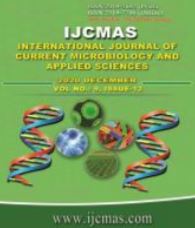


 National Academy of Agricultural Sciences (NAAS)
National Academy of Agricultural Sciences (NAAS)

|
PRINT ISSN : 2319-7692
Online ISSN : 2319-7706 Issues : 12 per year Publisher : Excellent Publishers Email : editorijcmas@gmail.com / submit@ijcmas.com Editor-in-chief: Dr.M.Prakash Index Copernicus ICV 2018: 95.39 NAAS RATING 2020: 5.38 |
Indian mustard (Brassica juncea L.) is one of the major oilseed crops in India. Increasing demand for edible oil makes it a necessity to increase the productivity of this crop. It is a natural amphi-diploid of Brassica rapa (AA) and Brassica nigra (BB) and is characterized by presence of two distinct gene pools – East European and Indian. The crosses between them have been shown to exhibit heterosis. Therefore, the genetic improvement of the two gene pools by carrying out introgression of desirable characters from one divergent pool to the other is vital in oilseed mustard improvement program. The major breeding objectives of B. juncea mainly lie in the improvement of its oil yield and quality. A dearth of easy-to-genotype and gene based molecular markers could be a hindrance in conducting a detailed genetic analysis. To understand the genetic basis of these traits, there is a need to construct a detailed genetic map with high levels of genome coverage. SSR markers designed from the genic regions had gained much importance in the past decade. Very few genic SSR markers had been developed in Brassica species. The present investigation is envisaged to develop a linkage map using microsatellite (SSR) markers.
 |
 |
 |
 |
 |